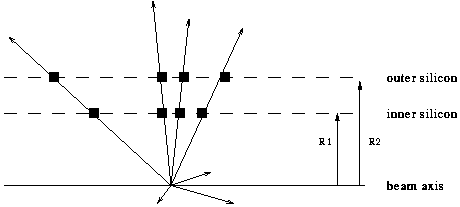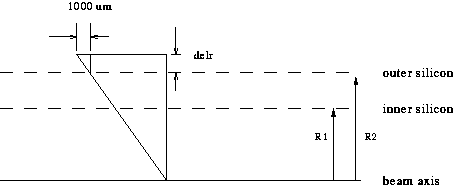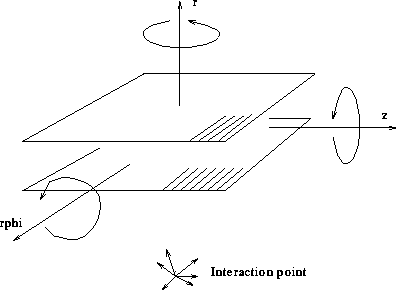
How can we develop criteria for internal an global tolerances and alignment?
One of the first vertex-finding methods derived for the MVD was the so-called correlation method.

Two layers of silicon strips are located at distances R1 and R2 from the beam axis. The pattern of hits on R2 is the same as the pattern on R1, scaled up by a factor R2/R1. The correlation method algorithm exploits this to determine the vertex position. The method works only if the strips are in their 'predicted' position. Thus we derive the criterion that the tolerances must be such that the actual hit at R2, as predicted by te position at R1, must be within 1/2 strip of the true position.
For example, to derive a tolerance in the relative placement in r of the silicon inner and outer layers, one would evaluate del-r in the following diagram:

For movements of one chip relative to another in the other directions (z, rphi), and rotations of one chip relative to another in a pair around the three axes, simple geometry similar to that in the above figure allows one to derive other criteria.
More restrictions can be derived from considering the displacements and rotations of chip pairs as shown below:
